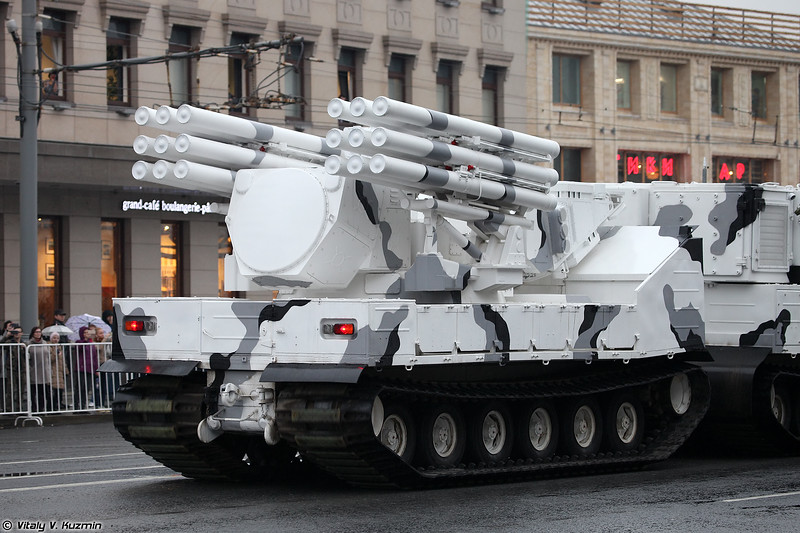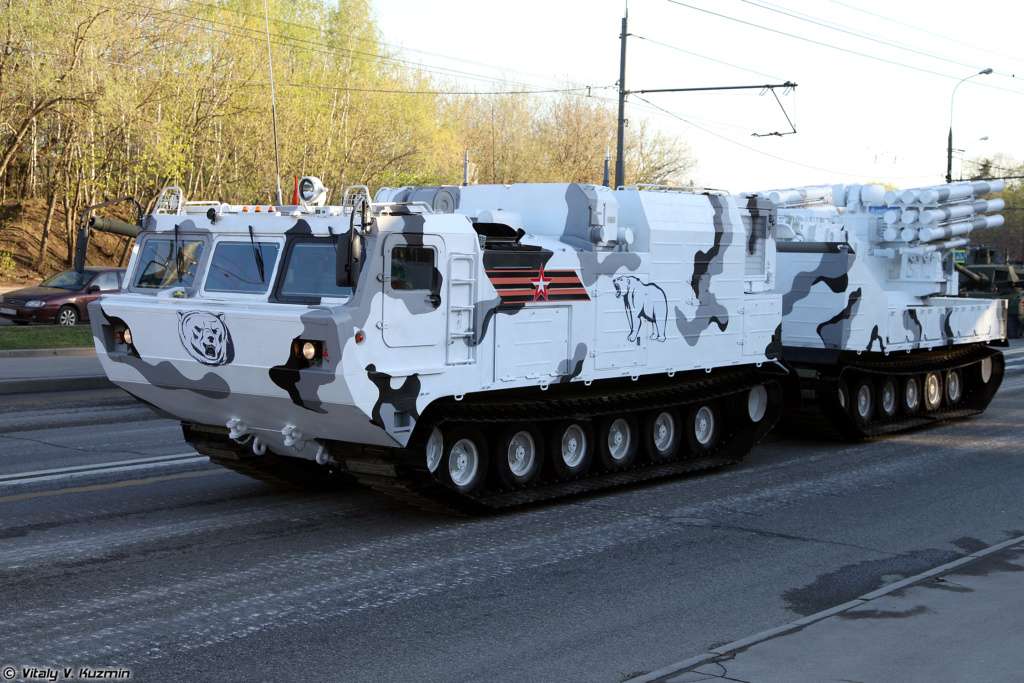new Pantsir-SM will be on armored truck or tracked vehicle.
For the Aerospace Defence forces (ie Air Force and Space Defence forces) they will likely use these trucks, and also for the Navy.... but the Army will likely mount them on all of their vehicle families.... ie Armata, Kurganets, Boomerang, and Typhoon. And likely the DT-30 articulated truck and trailer system for arctic regions.
new Pantsir-SM will be on armored truck or tracked vehicle.
new long-range missile (ABM?)
new small missile (Anti-Drone)
like Pantsir-SA one version of the vehicle will "only" have missiles, but double the current amount.
Don't forget to add the potential for a Pantsir launched drone that could be used for target practise in peace time, and for finding targets and assessing the effectiveness of an attack... it could even be a suicide drone that can attack ground or air targets when it runs out of juice...
How many missiles can a Pantsir guide simultaneously? I see the number of them available at the launcher is very big, but what about the capacity to simultaneously intercept targets?
Well that is now up for question... the old model could guided two missiles at each target and had four guidance channels in total... three radar and one optical with two missiles for each target so 8 missiles in the air against the four targets.
But the new system has an AESA radar which suggests potentially the ability to track more than 3 targets and to guide more than 8 missiles... (note the optically tracked targets still had their missiles guided using radio commands from the radar, but not anything you could easily jam or spoof or detect from a great distance).
S1 -4 2- optical 2- radar,
AFAIK it is 3 radar and 1 optical tracking for targets... with two missiles per target guided by radio command from the tracking radar.
Honestly the small missiles would be dedicated for PGM's, people overestimate the capability of swarm drones, ECM platforms integrated in IAD could mop them up easier then any missile could. People seem to forget that one of the most advanced drones ever created, the RQ-170 (could easily be an order of magnitude more sophisticated than any swarm drone), was defeated by the export equivalent of the Soviet-era created ECM platform, Autobaza, over the skies of Iran.
Small and cheap drones by definition wont be smart drones, and small simple drones will be relatively fragile... I rather suspect air burst 57mm rounds would be the most efficient medicine most of the time with Pantsir knocking down any launch platforms that come within range (tiny drones wont be very fast and wont be able to fly very far so kill them before they are launched...)
With new AESA radars for the Pantsir, not only will it be able to detect smaller targets at much greater ranges, but it should be able to guide a lot more missiles.
I would expect the radar vehicle would be able to track maybe 16 targets and guide 32 missiles to those targets... but obviously most of those missiles will come from the missile carrier with 24 missiles rather than the radar vehicle that only has 12 missiles.
A while back there was a mockup/model of a Hermes launcher that looked like a Grad launcher... it even had 40 launch tubes on the back... and AFAIK the design of the Hermes was unified with the design of the Pantsir missile... the only difference is that Hermes is an anti ground target missile with terminal homing with various options, while Pantsir is a cheap command guided surface to air missile...
Having an AESA radar would mean a vehicle with 40 ready to launch missiles might be useful... especially if loaded with the quad missile packs... 160 missiles per vehicle...
Note the very high speed of these missiles means the engagement time is generally very short so while 32 guided missiles at one time per radar vehicle does not sound super amazing... it could probably handle an enormous number of targets per minute because the engagement time for targets at 10km will be about 12 seconds or so....











